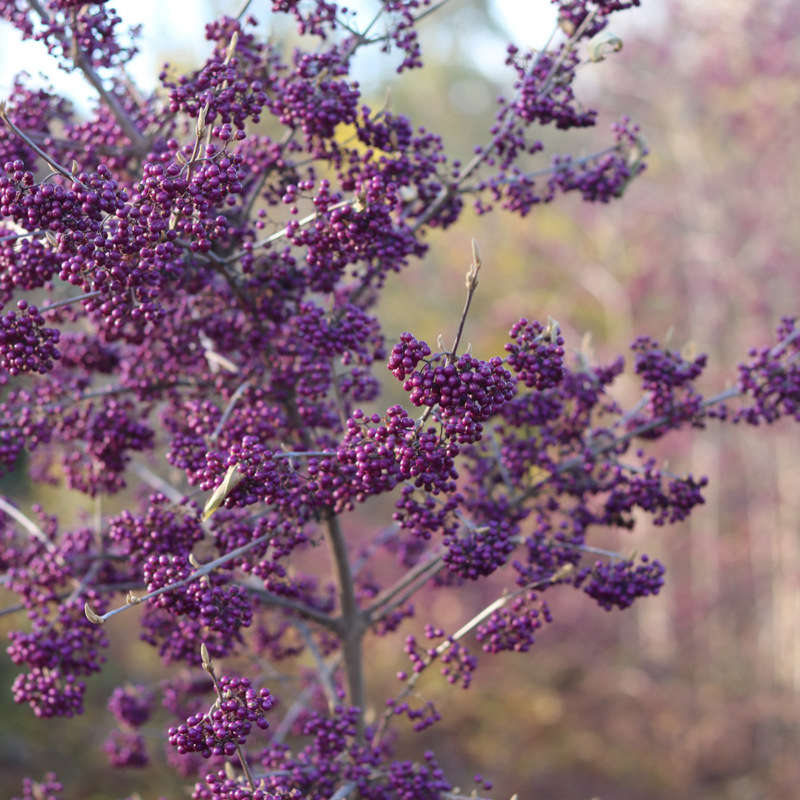

Beautyberry bushes burst into color in winter with brilliant purple berries when everything else looks drab. A native plant in much of the US, Callacarpa shrubs also feed resident and migrating birds.
Luckily the vivid purple berries on beautyberry shrubs are edible because they are irresistible in winter, hanging in bright clusters that look even more tempting against a gray, dormant landscape.
Beautyberry is a widespread genus of shrubs, with species native to Asia and Australia, as well as the Americas. In the US, the species you most likely have seen growing is Callicarpa americana. At maturity, the bush typically will reach a height of five feet (but in full sun may grow as tall as nine feet). “Cross-pollination results in copious fruit production, so plant in groups of two or more for optimal results,” writes our contributor Marie Viljoen.
If you have a beautyberry bush (or three) in your backyard, pick some of the berries to make jelly or jam. Leave the rest for the birds to feast on. If you want to plant beautyberry, see our tips in Landscaping 101: How to Plant a Bare Root Hedge.
For more shrubs with beautiful berries, see our growing guides for Bayberry, Blueberries, and Sumac. If you prefer the lipstick-red hue of rose hips, see our growing guide for Rosa Rugosa.